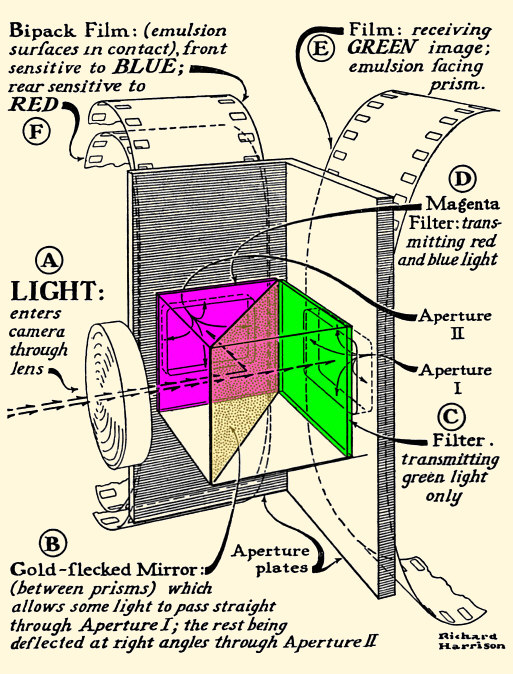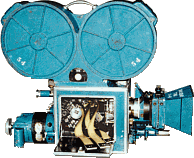Technicolor History 7 (original) (raw)
The venerable Technicolor 3-strip camera. Seen at right is a diagram of the prism and film advance assembly. If you find that drawing a bit cryptic then try the one below.

Three black and white films are transported through the prism assembly. The light coming through the camera lens, (A), travels to the double prism beam splitter, (B),and a portion of the light passes straight to the film behind the green filter, (C). The balance of the light is reflected by the gold flecked surface (later changed to silver) and passes through a magenta filter, (D), that removes the green light and transmits only red and blue. The red and blue films, (F), are bipacked emulsion-to-emulsion. Since this light must pass through the base of the blue film, the images recorded on the blue and red films are slightly less sharp than the green element, but the difference is minimal. The blue film had a red orange dye coating on top of its emulsion which acted as a filter to prevent any blue light from reaching the red element film, which was sensitive to both red and blue light. During development the filtering dyes were washed from the black and white negative. Note that the red and green films were panchromatic, (sensitive to all colors in the visible spectrum), while the blue film was orthochromatic, (sensitive to blue, green and violet light, but not to red).
Following processing, Technicolor had three black and white negatives which contained the blue, red, and green elements from the original scene. The negatives were then optically printed, (with compensation for any misregistration of the original negatives and optically flipping the red record to conform to the blue and green), to the black and white printing matrix films.
From this point, printing of the individual color elements is handled exactly as shown in the successive photography system.
 View High Rez Photos of Technicolor Camera
View High Rez Photos of Technicolor Camera